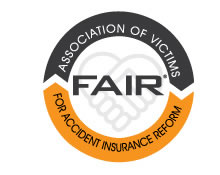Lawyer who claimed he was voted ‘No. 1 in Client Satisfaction’ hit with misconduct finding
Understanding Ontario Personal Injury Mediation Process
Thursday Thinkpiece: Anticipating and Managing the Psychological Cost of Civil Litigation
Expand the small claims court to protect access to justice
The Journey Home – Part 2
Injured workers in Ontario advised to seek opioids instead of cannabis
Brain Injury Leads to Innumerable Losses
Anjum v. Doe, 2018 ONSC 4344 (CanLII), <http://canlii.ca/t/ht01p
[16] The determination as to a lawyer’s entitlement to a charging order for fees and disbursements in an action depends on whether it can reasonably be said that a settlement or judgment obtained by the client will have been achieved through the “instrumentality” of the lawyer’s efforts. It is my view that in the circumstances of the present case, this can reasonably be said.
[17] In order to obtain a charging order on property, a solicitor must demonstrate that:
• The fund or property is in existence when the order is granted.[1]
• The property was “recovered or preserved” through the instrumentality of the solicitor.[2]
• The client cannot or will not pay the lawyer’s fees.[3]
[18] In the present case, the property that is in existence at the present time is the cause of action that, on the eve of trial, Mr. Alam has brought to near fruition on Mr. Anjum’s behalf. If Mr. Anjum obtains a judgment or recovers the proceeds of a settlement at this point, there can be little doubt that it will have been “recovered or preserved” through Mr. Alam’s efforts.
__________________________________
Gouthro v. Intact Insurance Company, 2018 ONSC 4060 (CanLII), <http://canlii.ca/t/hswbz
[19] In the accident benefit action, the questions are more complex since the jury must determine whether the substantial inability to work post 104 weeks is a result of the aggravation of a pre-existing condition. In other words, were the pre-existing migraine headaches aggravated by the accident, and which incapacitated her for the first 104 weeks, back to the level they were at prior to the accident? Or are they now fully managed so that the test of complete inability post 104 weeks has not been met?
[20] This analysis would bring into the play the theory of causation, and the questions on causations must be carefully worded so as to avoid confusion. The jury must determine whether, post 104 weeks, the plaintiff has proven on the balance of probabilities that she has a “substantial inability to perform the essential tasks of her employment” to “a complete inability” to perform her pre-accident employment or any alternative occupation that is reasonably comparable to the insured’s former job both in status and reward. Further, the plaintiff must prove that the inability is the result of “an incident in which the use or operation of an automobile directly causes an impairment”. See Schedule SS 3(1) sub nom “accident” and 6(2)(b).
[21] Even though the questions that the jury has to answer may be complicated, our courts have a held that consolidations of the tort and accident benefits claims can take place. See Harrison, Craig-Smith, Reeve, and Parsniak (supra).
[22] What further complicates this case is that the plaintiff’s relief is for a “declaration” that she is entitled to receive income replacement benefits and medical benefits pursuant to the statutory accident benefits schedule. Section 108(2)(10) of the Courts of Justice Act, R.S.O. 1990, c. J.1, precludes a jury from granting the declaratory relief. Counsel have assured me that the plaintiff is seeking damages and not a “declaration”, thereby permitting a jury trial. That admission alleviates this potential issue.
[23] Considering all of these factors, and particularly the factors enunciated by Master Dash in 1014864 Ontario Limited (supra), I conclude that consolidation of the tort and accident benefits claims ought to take place.



